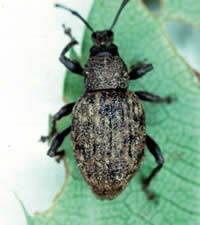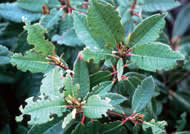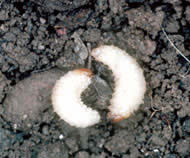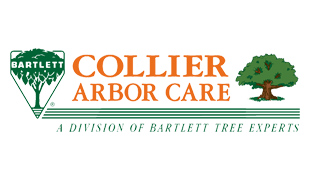|

Adult Root Weevil feeding on leaf Root WeevilDownload a PDF of this articleDescriptionAdults are commonly called weevils or snout beetles. Adults are 5-8 mm long with a hard shell, and are wingless. There are 4 or 5 different root weevil species including black vine, strawberry and obscure. Color varies by species from gray, dark brown to black. Larvae are legless white grubs with brown heads. They are “C” shaped and are found in the soil by the plants they are feeding on. Plants AffectedOver 100 plant species are affected including: perennials, strawberries, salal, Oregon grape, azaleas, rhododendrons, viburnum davidii, yew and spruce. Symptoms/DamageRoot weevil is the number one damaging insect to ornamental plants in the Northwest. Visual detection of an infestation can be seen through marginal notching of leaves due to the feeding of adults. Most often, these notches appear as if a small bite had been taken from the leaf’s edge. In extreme cases, continuous notching may reach the center of leaves and cause partial defoliation. Damage is primarily found in shady areas of landscapes or within individual plants that have dense foliage. The larval stage is far more damaging to the plants due to root and root crown feeding. Often, they girdle young plants by removing the bark around the root crown causing the plant to suddenly wilt and die up to 1-2 years after planting. Life CycleRoot weevils overwinter as larvae in the soil. In spring, the larvae feed on roots and the root crown. Pupation begins in spring, and adults emerge late spring throughout the summer. They immediately begin to feed on leaves and lay eggs 3 to 4 weeks later. Larvae emerge from these eggs and begin to feed on roots, continuing to do so through the fall. There is usually one generation per year. ManagementCulturalRemove unwanted susceptible vegetation to prevent additional feeding sites. Remove branches touching the ground and thin out dense foliage. Apply sticky band of tanglefoot around the trunk to capture adults. OrganicParasitic nematodes can be applied as a soil drench around the bases of plants during fall if soil is warm and moist. ChemicalApply approved insecticides from late spring to late summer to reduce adult populations. Soil drench with approved insecticides during fall. |

Plant damage from root weevils 
Root Weevil Larvae found in soil |
|
Home |
Services |
The Arbor Advisor |
Garden Calendar |
About Us |
Fact Sheets |
Contact Us |
Site Map Collier Arbor Care Portland 503-722-7267 Vancouver (360) 693-6056 Site contents and design ©2013 Collier Arbor Care |





